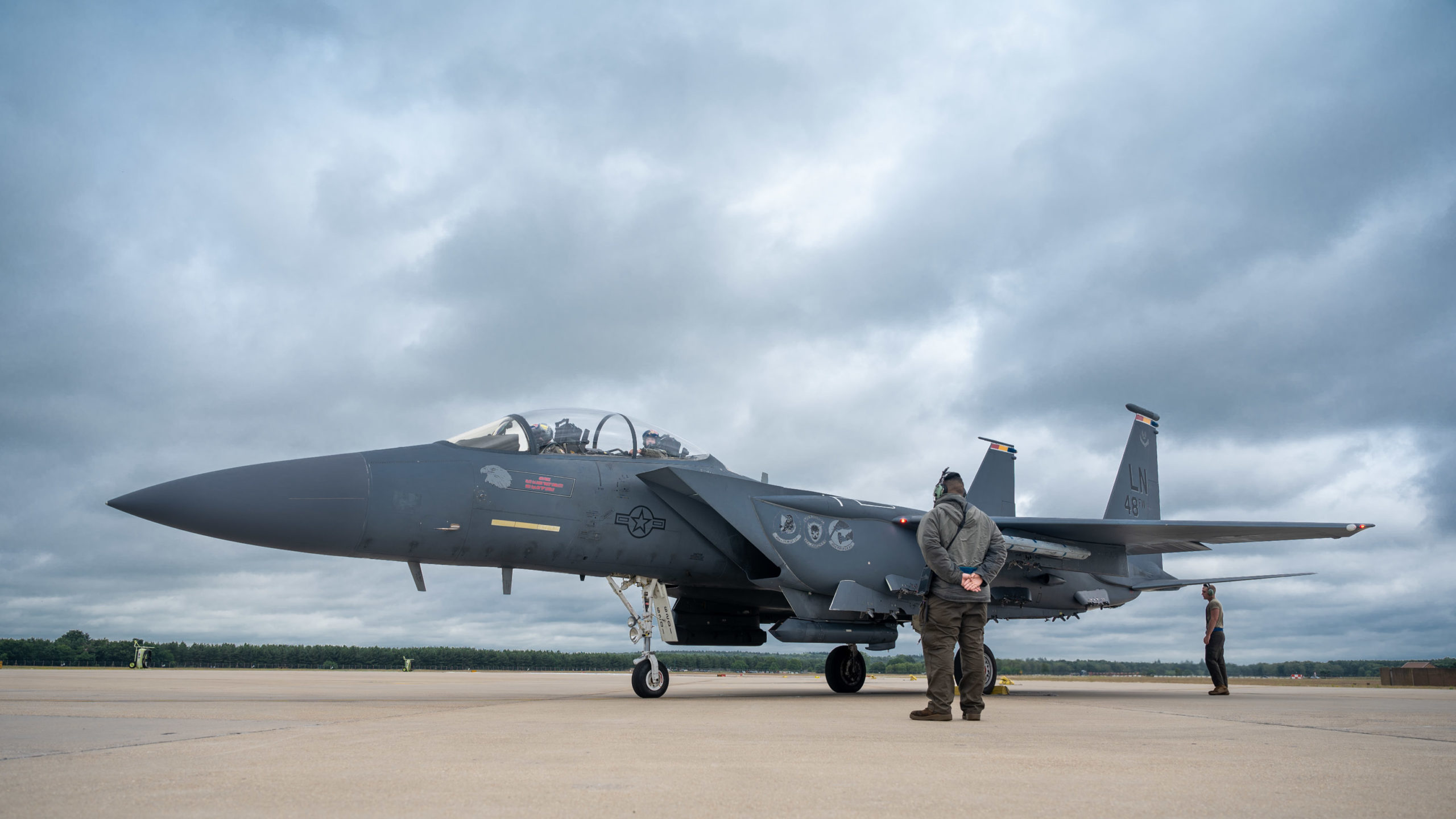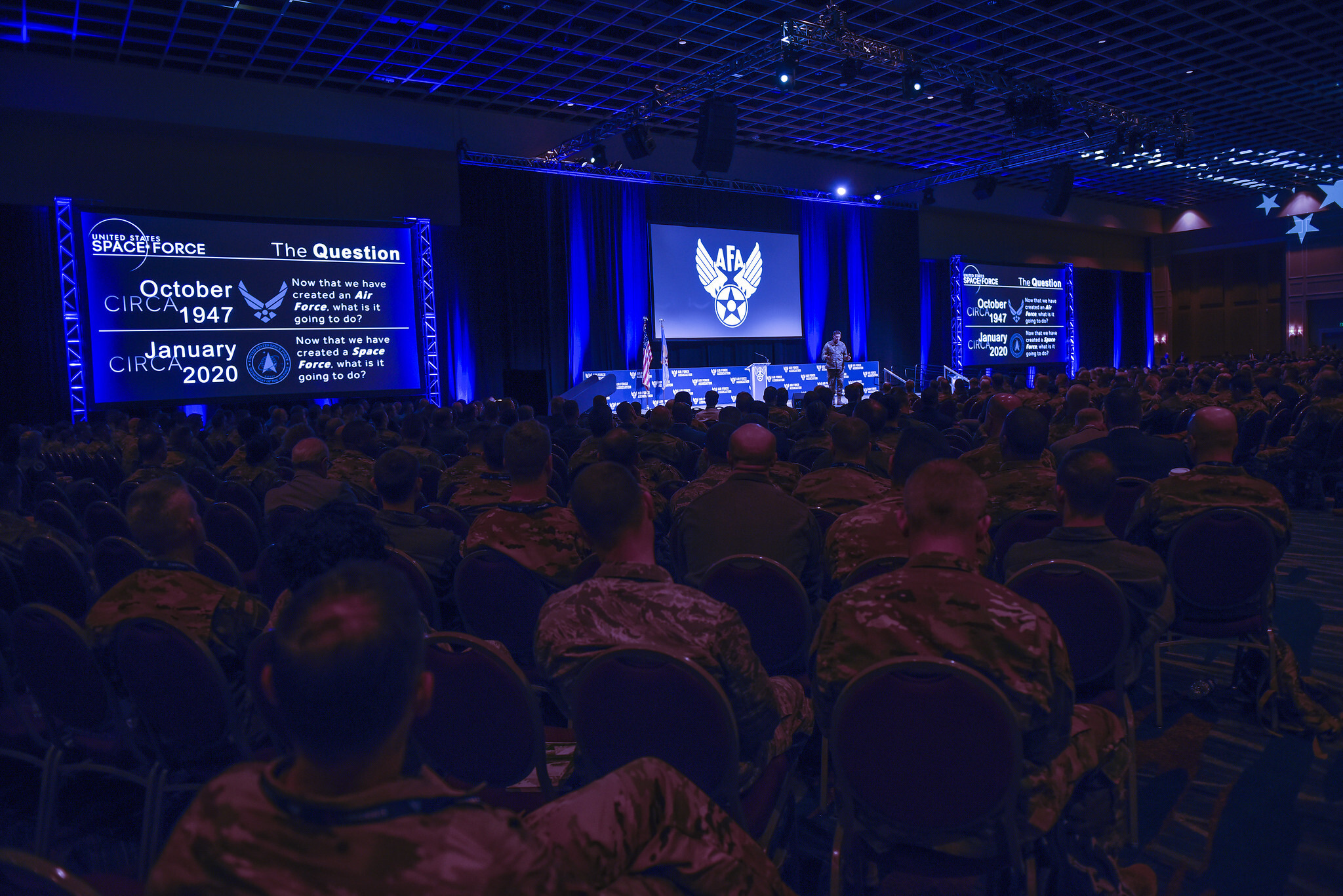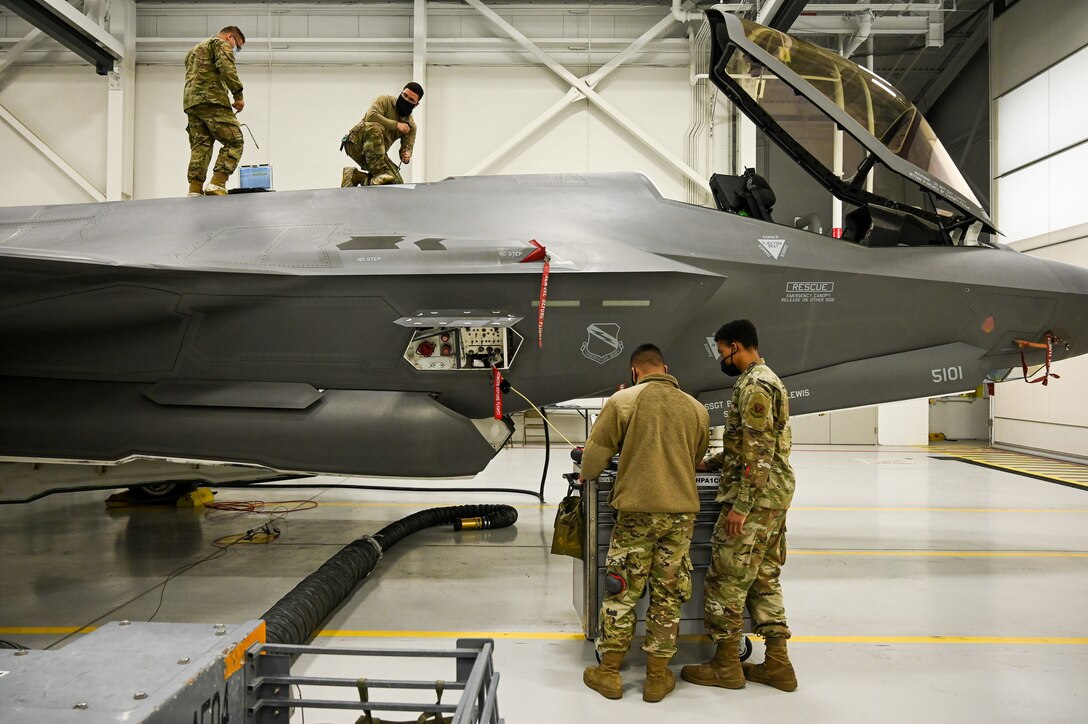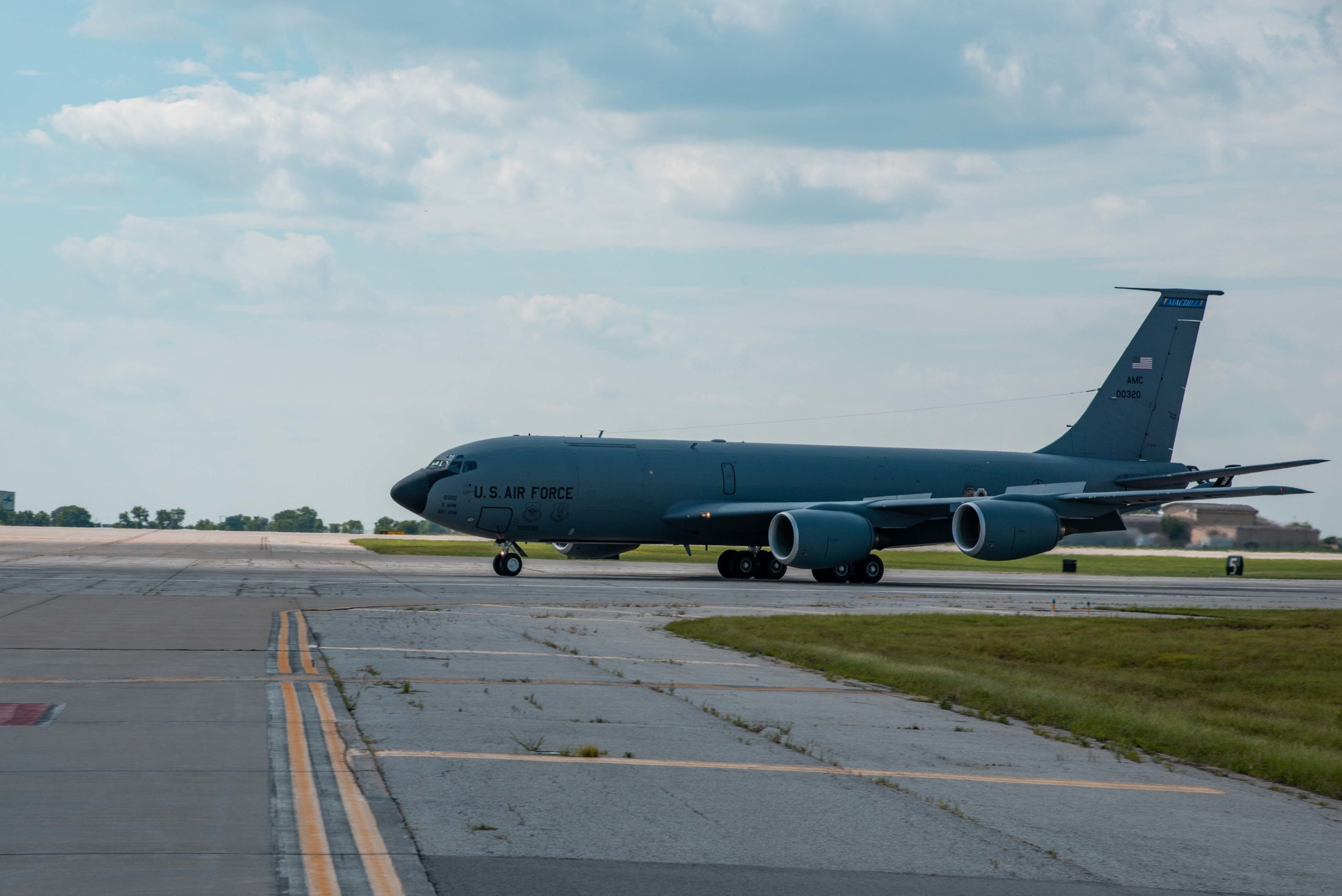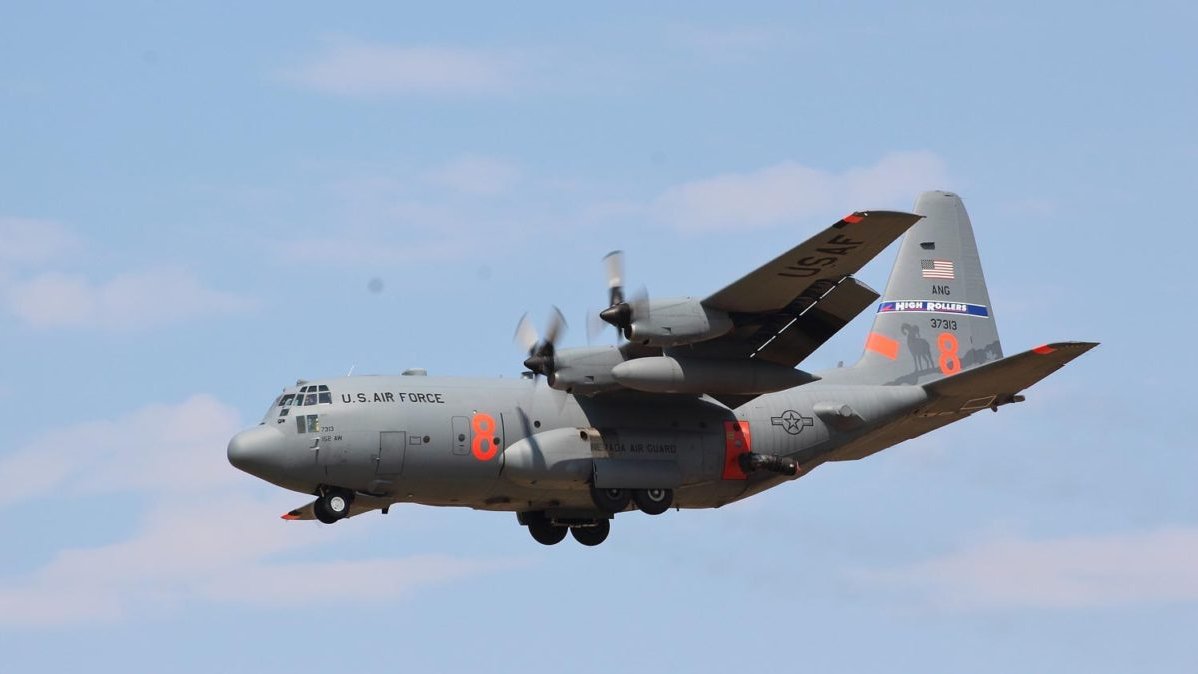As the last Americans leave Afghanistan, U.S. Central Command will look to space to support its continued counterterrorism mission against al-Qaida and Islamic State group remnants, U.S. Space Command confirmed to Air Force Magazine.
President Joe Biden said July 8 that the Afghanistan mission will be complete by Aug. 31. The announcement comes two days after U.S. Central Command said more than 90 percent of U.S. forces had already left the country. But CENTCOM still has the counterterrorism mission of rooting out the remnants of terrorist groups still operating in Afghanistan, and the command’s war planning relies on space-based capabilities.
“USSPACECOM will continue to provide USCENTCOM with space capabilities supporting their missions in their theater of operations to include Afghanistan,” a U.S. Space Command spokesperson told Air Force Magazine.
Space-based capabilities include space control; position, navigation, and timing; satellite communications; and missile warning, the command said.
That means the Combined Force Space Component Command at Vandenberg Space Force Base, Calif., will be helping to protect the signals controlling remotely piloted aircraft in the skies over Afghanistan. The CFSCC could also be jamming any signals when necessary.
In congressional testimony, CENTCOM commander Gen. Kenneth F. McKenzie Jr. has said maintaining ISR in Afghanistan without basing in the country or regionally will require many more overflight missions due to commutes of up to four hours from Gulf bases.
Those support requests will be routed through Space Command.
Meanwhile, aircraft will still need navigation, position, and timing guidance if they are to target terrorists on the ground in Afghanistan.
A defense official told Air Force Magazine the mission to support CENTCOM with space-based capabilities is nothing new. But without assets on the ground, America’s eyes in the sky will form the intelligence picture until a new agreement is worked out with the Afghan government.
“Not a lot is going to change space-wise,” the official said.
Afghan war veteran Rep. Mike Waltz (R-Fla.) warned that America’s intelligence, reconnaissance, and surveillance capabilities over Afghanistan will sharply reduce once troops are out, even with drone ISR capabilities commuting from Gulf bases.
“The reality without local allies on the ground, without local intelligence on the ground, without a base in country, the distances involved—or in the region for that matter—the distances involved from the Gulf, that makes it incredibly complicated,” he told Air Force Magazine in a recent interview.
The State Department is actively negotiating with several countries that border Afghanistan and could potentially host American surveillance drones. In a series of quiet Pentagon meetings without press availability or public welcoming, Defense Secretary Lloyd J. Austin III met with the defense ministers of Tajikistan and Uzbekistan, both northern neighbors of Afghanistan.
“I will be pleasantly surprised if the Russians allow us to base forces there, but I remain hopeful,” said Waltz. “Those things should have been worked out before we made the withdrawal decision because at the end of the day, maintaining pressure from a counterterrorism standpoint is critical to our national interest.”
Space Command, temporarily based in Colorado Springs, already provides combat-relevant space capabilities to combatant commanders, coalition partners, and the Joint Force.
“Additionally, USSPACECOM has a standing integrated planning element at the USCENTCOM headquarters to facilitate the integration of space into USCENTCOM plans and operations and to be the liaison between our headquarters,” the SPACECOM spokesperson said.
That means an operational liaison from SPACECOM is present as part of CENTCOM’s war planning process, not as an afterthought.
U.S. Central Command did not immediately respond to Air Force Magazine’s requests for comment.
DOD said July 2 that McKenzie will soon take over the mission in Afghanistan from Gen. Austin S. Miller.
Pentagon spokesman John F. Kirby told Air Force Magazine on July 6 that McKenzie will retain all the “over-the-horizon” strike capabilities necessary for the counterterrorism mission in Afghanistan.
“I don’t have a breakdown for you right now what that’s going to look like,” he said. “It’s important to remember we already have an over-the-horizon counterterrorism capability … [and] a carrier strike group in the region. We’ve got facilities throughout the Middle East that have and will continue to be of value in this regard, so we have that capability.”

